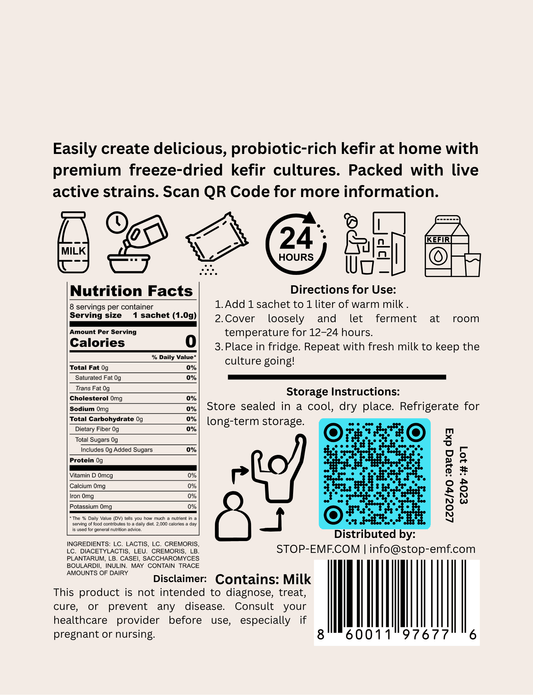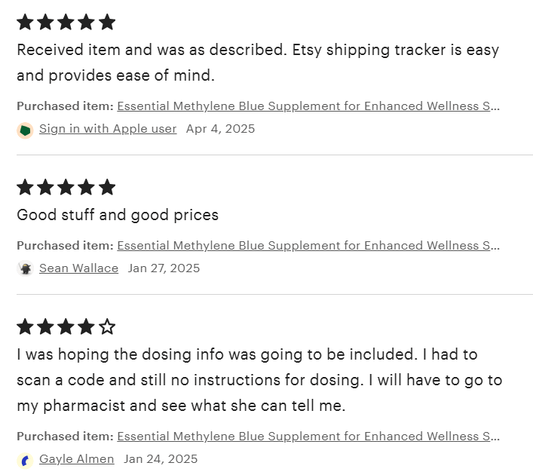Kombucha, the fizzy, fermented tea that has taken the health and wellness world by storm, is no longer just for the seasoned fermentation enthusiasts. With its array of potential health benefits, from gut health to immune support, it's no wonder more and more people are eager to learn how to brew their own kombucha at home.
Whether you're a newcomer to the world of fermentation or a seasoned DIY-er, this comprehensive guide will walk you through the process of brewing your own delicious, probiotic-rich kombucha from the comfort of your kitchen. From selecting the right ingredients to mastering the art of carbonation, we'll cover everything you need to know to become a kombucha connoisseur.
The Basics of Kombucha Brewing
Kombucha is a fermented tea that is created by combining sweetened black or green tea with a SCOBY (Symbiotic Culture of Bacteria and Yeast). This unique culture transforms the sugary tea into a slightly effervescent, slightly tart, and incredibly refreshing beverage.
The process of brewing kombucha involves a two-stage fermentation. During the first stage, the SCOBY consumes the sugar in the tea, converting it into organic acids, such as acetic acid and gluconic acid, as well as small amounts of alcohol. This results in the characteristic tangy flavor of kombucha.
In the second stage, the kombucha is transferred to a sealed container, where it undergoes a secondary fermentation. This allows the kombucha to become carbonated, adding a delightful fizz to the final product.
The Benefits of Homemade Kombucha
Brewing your own kombucha at home offers a multitude of benefits, both for your health and your wallet. Here are just a few reasons why you should consider making the switch to homemade:
-
Cost Savings: Commercially-produced kombucha can be quite expensive, especially if you consume it regularly. By brewing your own, you can save a significant amount of money in the long run.
-
Customization: When you make your own kombucha, you have complete control over the ingredients, allowing you to tailor the flavor profile to your personal preferences. You can experiment with different tea blends, fruit additions, and even incorporate herbs and spices.
-
Improved Gut Health: Kombucha is rich in probiotics, which are beneficial bacteria that can help support a healthy gut microbiome. Consuming homemade kombucha can contribute to improved digestion, enhanced immune function, and overall well-being.
-
Reduced Environmental Impact: By brewing your own kombucha, you can reduce your reliance on single-use plastic bottles and cans, making it a more sustainable choice.
Gathering the Necessary Supplies
Before you can start brewing your own kombucha, you'll need to gather a few essential supplies. Here's what you'll need:
-
Brewing Vessel: A glass jar or container with a wide mouth and a tight-fitting lid is ideal for brewing kombucha. A 1-gallon jar is a common size for beginners.
-
SCOBY: The SCOBY is the heart of the kombucha-making process. You can either purchase a SCOBY online or from a friend who is already brewing kombucha.
-
Starter Liquid: This is the liquid from a previous batch of kombucha, which helps to kickstart the fermentation process.
-
Tea: Black tea or green tea are the most common choices for brewing kombucha. You can also experiment with herbal teas or tea blends.
-
Sugar: White sugar is the most commonly used sweetener for kombucha, but you can also try using other types of sugar, such as raw cane sugar or honey.
-
Filtered Water: It's important to use high-quality, chlorine-free water for brewing kombucha, as the chlorine can inhibit the growth of the SCOBY.
-
Thermometer: A digital thermometer can be helpful for monitoring the temperature of your brewing environment.
-
Cheesecloth or Muslin Cloth: These materials are used to cover the brewing vessel during the fermentation process, allowing air to circulate while keeping out any unwanted contaminants.
-
Bottles: Once your kombucha is ready, you'll need airtight bottles or jars to store it for the second fermentation and carbonation.
With these supplies on hand, you're ready to embark on your homemade kombucha journey.
The Kombucha Brewing Process
Now that you have all the necessary equipment and ingredients, let's dive into the step-by-step process of brewing your own kombucha.
Step 1: Prepare the Tea
Begin by bringing 4 cups of filtered water to a boil in a saucepan. Once the water is boiling, remove it from the heat and add 4 tea bags or 4 teaspoons of loose-leaf tea. Allow the tea to steep for 5-7 minutes, then remove the tea bags or strain out the loose-leaf tea.
Step 2: Add the Sugar
While the tea is still hot, stir in 1/2 cup of white sugar until it has completely dissolved. This sweetened tea will serve as the base for your kombucha.
Step 3: Cool the Tea
Allow the sweetened tea to cool to room temperature, around 70-85°F (21-29°C). You can speed up the cooling process by placing the saucepan in an ice bath or by transferring the tea to a clean, wide-mouth glass jar.
Step 4: Add the SCOBY and Starter Liquid
Once the tea has cooled, gently place the SCOBY into the jar, along with 1 cup of starter liquid (the liquid from a previous batch of kombucha). This starter liquid will help establish the correct pH and kickstart the fermentation process.
Step 5: Cover and Ferment
Cover the jar with a cheesecloth or muslin cloth, securing it with a rubber band or jar lid. This will allow air to circulate while keeping out any unwanted contaminants.
Place the covered jar in a warm, dark place, such as a kitchen cabinet or pantry, where the temperature remains between 70-85°F (21-29°C). Allow the kombucha to ferment for 7-14 days, depending on your desired level of tartness.
Step 6: Monitor and Taste
During the fermentation process, keep an eye on your kombucha, checking it daily. You may notice the SCOBY growing and a new layer forming on the surface. The kombucha should become increasingly carbonated and tart over time.
Start tasting your kombucha after 7 days, using a clean straw or spoon. When it reaches your desired flavor profile, it's time to move on to the next step.
Step 7: Bottle and Second Fermentation
Once your kombucha has reached the perfect balance of sweetness and tartness, it's time to bottle it for the second fermentation. This step will help develop the carbonation and allow you to experiment with different flavor combinations.
Carefully remove the SCOBY and starter liquid, reserving them for your next batch. Then, pour the kombucha into airtight bottles or jars, leaving about 1-2 inches of headspace at the top.
At this stage, you can add any desired flavorings, such as fresh fruit, herbs, or spices. Secure the lids and allow the bottles to sit at room temperature for an additional 3-10 days, depending on your preference for carbonation.
Step 8: Chill and Enjoy
Once the second fermentation is complete, transfer your flavored kombucha to the refrigerator. The cold temperature will slow down the fermentation process and help maintain the carbonation.
Your homemade kombucha is now ready to be enjoyed! Pour it over ice, mix it into cocktails, or simply sip it straight. Remember to reserve a cup of starter liquid from each batch to kickstart your next round of brewing.
Troubleshooting and Tips for Successful Kombucha Brewing
Brewing kombucha at home can be a rewarding experience, but it's not without its challenges. Here are some common issues you may encounter and tips to help you overcome them:
Mold or Discoloration
If you notice any mold, slime, or discoloration on your SCOBY or in the kombucha, it's best to discard the entire batch and start over with a new SCOBY. Mold can be a sign of contamination, and it's not worth the risk of consuming it.
Slow or Stalled Fermentation
If your kombucha isn't fermenting as quickly as expected, check the temperature of your brewing environment. Kombucha thrives in a warm, consistent temperature between 70-85°F (21-29°C). You can try moving the jar to a warmer spot or using a heating pad to maintain the ideal temperature.
Overly Tart or Vinegary Flavor
If your kombucha has become too tart or vinegary, it's likely that the fermentation has gone on for too long. In the future, try reducing the fermentation time or lowering the temperature to slow down the process.
Flat or Undercarbed Kombucha
If your kombucha lacks the desired carbonation, make sure to seal the bottles tightly during the second fermentation. You can also try adding a small amount of sugar or fruit juice to the bottles to encourage more CO2 production.
SCOBY Issues
If your SCOBY appears unhealthy, with discoloration or an unusual texture, it's best to replace it with a new, healthy SCOBY. SCOBYs can sometimes become compromised over time, so it's important to monitor their condition.
Remember, the key to successful kombucha brewing is patience, attention to detail, and a willingness to experiment. Don't be discouraged if your first few batches don't turn out exactly as you'd hoped. With practice and a little troubleshooting, you'll be brewing delicious, probiotic-rich kombucha in no time.
Conclusion
Brewing your own kombucha at home is a rewarding and empowering experience that can provide numerous health benefits and cost savings. By following this step-by-step guide, you'll be well on your way to becoming a kombucha connoisseur, able to customize your brews to suit your unique taste preferences.
Whether you're looking to improve your gut health, reduce your environmental impact, or simply enjoy a refreshing, fizzy beverage, homemade kombucha is a fantastic choice. So, grab your supplies, dive into the fermentation process, and get ready to unlock the secrets of this ancient elixir.
Happy brewing!






